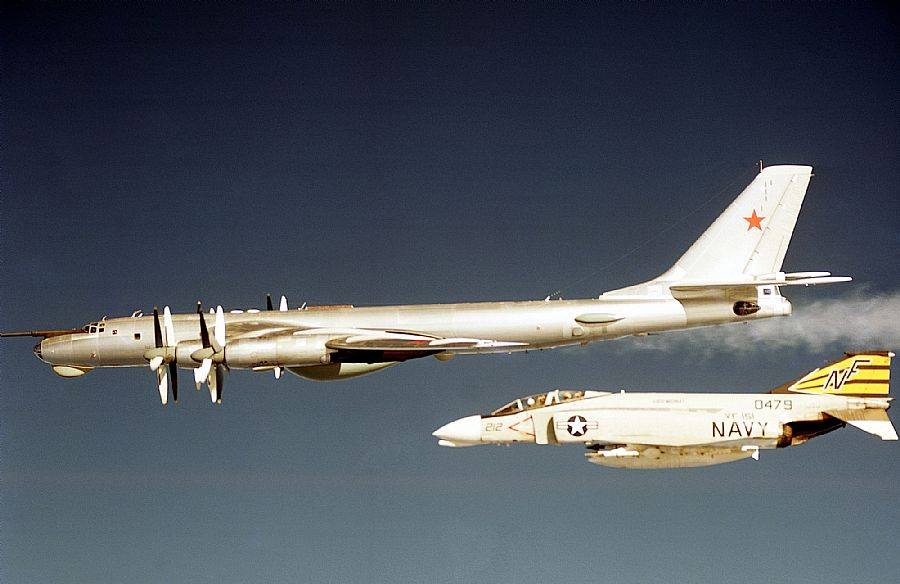One rule of engagement was constant in all these incidents: make the intercept as close as possible to 100 miles from the ship
I was involved in four Soviet Badger and Bear overflights of U.S. Navy Carriers, on four different flattops – two as a pilot and two as a CIC (Combat Information Center) officer.
I was a pilot attached to Fighter Squadron (VF) 21 Freelancers aboard USS Midway (CVA-41) when it was overflown by Tu-16 Badgers in Sep. 1962 – the very first Soviet overflight of a carrier and one that is mostly unknown due to the secrecy surrounding its mission.
This was a planned operation to gain electronic intelligence on the Badger’s radar and communications systems.
At the end of the ‘62 deployment, Midway left Yokosuka, Japan, and headed north incomplete electronic silence. The ship sailed to a position 100 miles east of the Kuril Islands and turned on all electronics and commenced flight ops. The next day six TU-16 Badgers flew out to surveil the task force. Midway had several “packages” ready in alert-5. Each package consisted of an F3H Demon, an A-4 tanker, and an EA-3 electronics countermeasures aircraft.

The weather was terrible! The overcast was at 1,000’ and the goo extended upward beyond the altitude the Badgers were flying. The rules of engagement were strict – make a tail-tracking intercept and get no closer than 1-1/2 miles to the target. I made an intercept with an A-4 tanker on my port wing and an EA-3 on my starboard wing.
Never saw the Badger.
However, the operation was hugely successful.
The EA-3 guys captured enough electronic data for the Navy to create the Brigand system which allowed ECM aircraft to intercept and display data and images displayed on Badger scopes during the delivery of an air-to-surface missile launch.
On another occasion, I was assistant CIC Officer aboard USS Enterprise (CVN-65) when she was pulled out of the Gulf of Tonkin and sent to the sea of Japan Defender Station in response to the North Korean shootdown of an EC-121 in 1969. I was in charge of launching F-4 and F-8 aircraft from Enterprise and USS Ranger (CV-61) to intercept the soviets.
In 1978 I was CIC Officer aboard the USS Coral Sea (CV-43) when we were overflown by Tu-95 Bears during our transit from Yokosuka to Hawaii.
One rule of engagement was constant in all these incidents: make the intercept as close as possible to 100 miles from the ship.
The last time I had the chance to intercept Soviet bombers I was VF-74 Be-Devilers operations officer aboard USS Forrestal (CV-59) during our transit home from the 1965/66 Mediterranean deployment. I had very good intelligence on the ETA (Estimated Time of Arrival) of the TU-95 Bear aircraft that were coming to overfly the ship so I scheduled myself to be in an F-4 in alert 5 status during that time. I call the photo on top of the article “The Sandwich,” because my F-4 is sandwiched between the Bear and the A-3. An F-8 photo plane accompanied each fighter on each intercept.
Noteworthy there was the second Bear in the trail that was escorted by two F-8s from Marine Fighter Squadron (All Weather) (VMF(AW) 451.
To paraphrase the Farmers commercial, “I know a thing or two because I’ve seen a thing or two.”

Top image: U.S. Navy via John Newlin; A-4 Image: U.S. Navy, Bear-Phantom image: U.S. Navy

